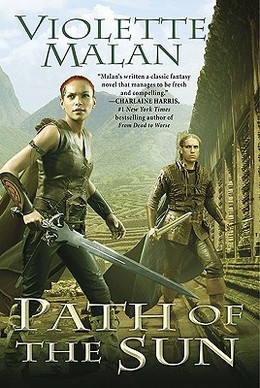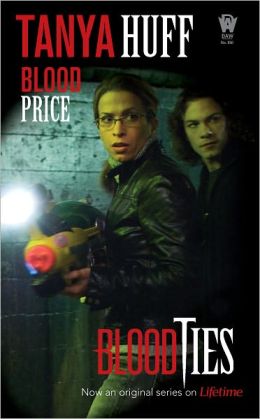You’ve Got Crime in My Fantasy Novel. You’ve Got Fantasy . . .
 So, I decided to write a serial-killer book. All my friends were.
So, I decided to write a serial-killer book. All my friends were.
Perhaps I should explain. A lot of my friends are crime and mystery writers, and with them, after a few glasses of wine, the talk always seems to turn to serial-killer books. Who’s writing one. Who wants to. Who’s never gonna, no matter what. How publishers always push for one. It’s like serial killers are the new black.
Inevitably someone turns to me and says “Well, you don’t have to worry, Violette. It’s not like you could write a serial-killer fantasy novel.” Well, as you can imagine, I regarded those as fighting words – and now you know the origin of my novel, Path of the Sun.
Of course, that friend was echoing the John W. Campbell opinion on science-fiction mysteries that I mentioned a few weeks ago. According to Campbell, it couldn’t be done. Here in the community, experience has shown us that Campbell was wrong. But the attitude among non-fantasy or SF readers is still pretty much the same as his.
The trick, as most of you know, is to solve the crime – sometimes after figuring out how to commit the crime – within the parameters of our created worlds. Sometimes, we can even create crimes our pure-mystery-loving friends have never even thought of. Any common thief can steal money, the Fantasy or SF thief can steal your soul. Or a few hours of time out of your life. Or, perhaps, the best time of your life.
But let me get back to my serial killer.








 I got my first taste of Greek mythology from D’Aulaire’s Greek Myths. Later, when I was old enough for Bulfinch’s Mythology, I thought I had graduated to the real thing. Homer came to me by way of a dusty turn-of-the-century book with a title along the lines of The Boy’s Own Homer, with glorious color illustrations. D’Aulaire gave me the Norse myths, too, though I didn’t get The Ring of the Niebelungen until a friend gave me a mixtape that included
I got my first taste of Greek mythology from D’Aulaire’s Greek Myths. Later, when I was old enough for Bulfinch’s Mythology, I thought I had graduated to the real thing. Homer came to me by way of a dusty turn-of-the-century book with a title along the lines of The Boy’s Own Homer, with glorious color illustrations. D’Aulaire gave me the Norse myths, too, though I didn’t get The Ring of the Niebelungen until a friend gave me a mixtape that included